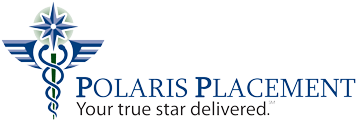Between increased healthcare needs for aging baby boomers, the stark discrepancy in the number of retiring healthcare professionals versus those entering the workforce and provider burnout due to the pandemic, hospitals and healthcare facilities are continuing to grapple with staffing shortages. And the issue doesn’t appear to be going away any time soon.
Challenges in the Healthcare Labor Market
Healthcare facilities are facing a grim reality: striving to return to normalcy in the wake of increased hospitalizations due to Covid-19 and simultaneous worker illness, which limited available labor supply. Long, arduous hours paired with pandemic-related stress have also fueled burnout and mental health issues.
Prior to the pandemic, 83% of healthcare executives and clinical leaders said burnout was a primary issue plaguing their organization. Since the onset of the pandemic, the impacts of burnout have only been exacerbated, causing healthcare workers to pursue new opportunities with employers prioritizing flexible scheduling and wellness initiatives.
The long-standing labor shortage has not only intensified, but it’s triggering a snowball effect among the current workforce, who are forced to shoulder the burden of delivering quality care with fewer resources. Hospital administrators report that increasing nursing shortages are causing a major deficit in the continuity of care, causing burnout and lowering job satisfaction. With these issues expected to continue disrupting the healthcare labor market in the coming years, leaders must devise and implement long-term strategies aimed at mitigating hurdles.
Addressing Staffing Shortages Today & In the Future
To manage surge capacity and protect the integrity of care delivery, organizations will need to leverage a multi-tiered approach to staffing their facility. From succession planning for vital positions to utilizing a healthcare recruitment firm to bridge unexpected coverage gaps, it’s imperative to minimize risk factors that could negatively impact staff levels. This includes reevaluating technology and service offerings, like telemedicine, as well as establishing a culture rooted in safety and well-being.
As the MHA shares, it has become “more critical than ever for hospitals to incorporate thriving into their culture. Helping team members recharge, combat burnout, and enhance resiliency is essential for their well-being and for their ability to consistently provide the highest quality patient care.”
And labor shortages are only expected to increase over the next decade:
- The American Association of Medical Colleges (AAMC) estimates a shortage of 124,000 physicians by 2032, with numbers expected to rise as the over-65 population is projected to grow 48% by 2032.
- The U.S. Bureau of Labor Statistics estimates that there will be nearly 195,000 vacancies for registered nurses each year through 2030.
Poor retention rates are also compounding shortages. The American Hospital Association revealed, “One study found that the nurse turnover rate was 18.7%, illustrating the magnitude of the issue facing hospitals and their ability to maintain nursing staff. The same study also found that 35.8% of hospitals reported a nurse vacancy rate of greater than 10%, which is up from 23.7% of hospitals prior to the pandemic.”
As healthcare organizations establish long-term strategic initiatives, both recruitment and retention will need to be included in their efforts. Employers should consider the types of perks and benefits they’re offering, like referral bonuses and student loan repayment, to attract new talent to their facilities.
Identifying ways to provide workers with increased control over scheduling, as well as investing in development opportunities and mentorship programs are also effective ways of driving drive staff retention.
Quick example: one of our client hospitals asked their nurses if they preferred a 12-hour shift over the traditional 8-hour model. A significant majority preferred the 12-hour one. Since the change, they have seen a 30+% improvement in retention and even higher numbers for overall job satisfaction.
Setting Yourself Up for Success
New technologies are enabling hospitals and healthcare facilities to adopt more flexible staffing models. With a broader talent pool to access, organizations have the opportunity to build robust pipelines of candidates – ideal for anticipating and filling needs as they arise. Offloading much of the recruitment process by leveraging a healthcare staffing agency can be highly beneficial in decreasing costs, shortening time-to-fill and saving valuable time.
The experts at Polaris Placement have an extensive breadth of expertise in navigating the healthcare space. From sourcing and vetting to interviewing and onboarding, contact us today to learn how we can help your organization increase its bottom line and improve the patient experience.


Trackbacks/Pingbacks